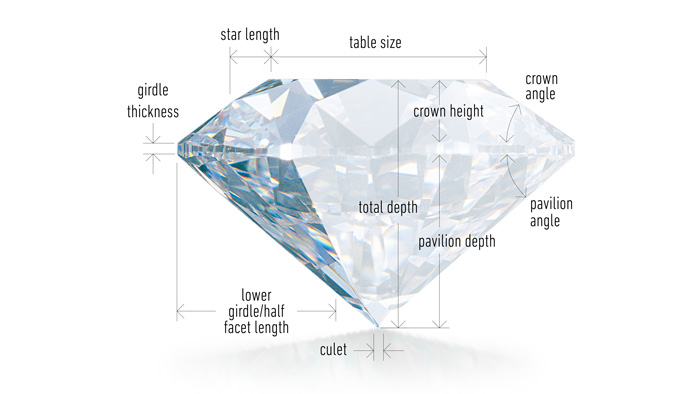No Products in the Cart

Diamonds are renowned for their ability to transmit light and sparkle so intensely. We often think of a diamond’s cut as shape (round, heart, oval, marquise, pear), but what diamond cut actually does mean how well a diamond’s facets interact with light. Precise artistry and workmanship are required to fashion a stone so its proportions, symmetry and polish deliver the magnificent return of light only possible in a diamond.
Achieving the best cut for a diamond reflects in the stone’s final beauty and value. And of all the diamond 4Cs, it is the most complex and technically difficult to analyze. To determine the cut grade of the standard round brilliant diamond – the shape that dominates the majority of diamond jewelry – GIA calculates the proportions of those facets that influence the diamond’s face-up appearance. These proportions allow GIA to evaluate what the best cut for a diamond is, by studying how successfully a diamond interacts with light to create desirable visual effects, such as:
GIA’s diamond cut grade also takes into account the design and craftsmanship of the diamond, including its weight relative to its diameter, its girdle thickness (which affects its durability), the symmetry of its facet arrangement, and the quality of polish on those facets.
The GIA Diamond Cut Scale for standard round brilliant diamonds in the D-to-Z diamond colour range contains 5 grades ranging from Excellent to Poor and is the definitive scale for classifying diamond cuts.
The distance from the bottom of the girdle to the culet is the pavilion depth. A pavilion depth that’s too shallow or too deep will allow light to escape from the side of the stone or leak out of the bottom. A well-cut diamond will direct more light through the crown.